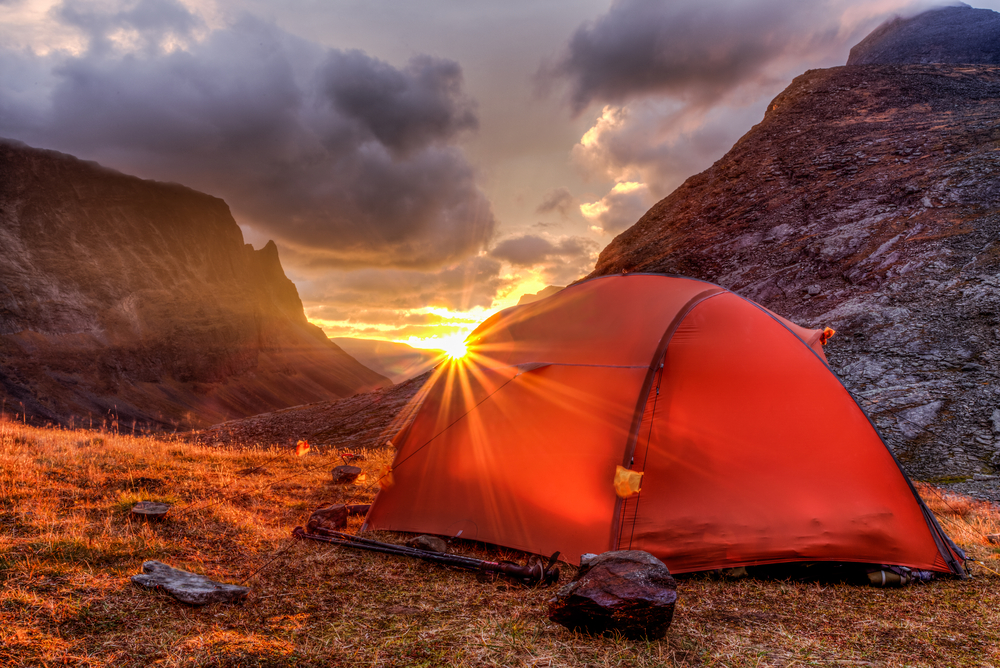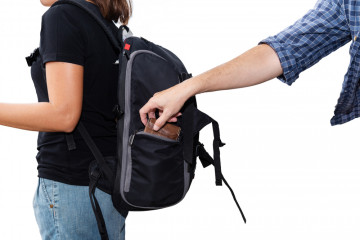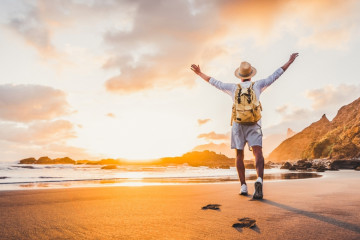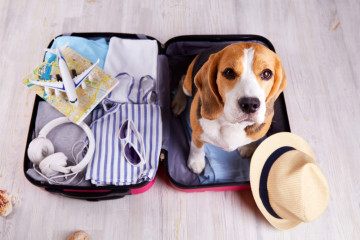Make your fall camping trip about enjoyment, not endurance
For many people, camping is a pure summertime activity. Once the needles start to turn golden orange and the trails get strewn with leaves, camping equipment is carefully stowed away until the following summer. But the true outdoorsman knows that if you properly prepare yourself and your equipment, fall is the best time of year to hit the trail and get out in nature.
Fall camping calls for a little more preparation than a summer trip. You can’t just throw a sleeping bag on your back and head out into nature, knowing that it will be 70 degrees or more. But in return for this preparation, you get quieter campsites, picturesque sunsets, long nights sitting around the campfire, and best of all, no bugs. These camping ideas and tips will get you off the sofa and back outdoors this fall.
Find the right place to camp in the fall
If you were to open up your phone and search for “the best sites for fall camping near me” you would get hundreds of people’s opinions on what makes a great site for fall camping. But really, you need to decide what you want out of fall camping and then decide on the best camp spot. Do you want an open campground that you can stargaze from? Perhaps you want an enclosed woodland that you can shelter in and make yourself a survivalist retreat, or a raised area with views over forests and mountains.
Whatever your escape, there are plenty of ways to find out the best camping spots for fall, from internet searches, local outfitters, or guidebooks. But when you get to your fall camping site, there are some tips for picking your microsite, where you’ll hang out and pitch your tent. It’s even more important in fall to find higher and drier ground, as rivers swell quickly and pools fill with excess rainfall.
Try to find some natural shelter where possible, and remember that cool nights down low can hit freezing up higher. Camping at altitude in the fall is serious business, and it’s often best to hit the heights during the day and retreat to lower levels overnight.
Get your sleep system right
Nearly every fall camping tip revolves around staying warm, and at no time is that more important than when you’re trying to sleep. Your camping sleep system includes everything from your tent, to your sleeping pad and sleeping mat. With cooler fall nights, it’s not uncommon to fall asleep feeling warm, only to wake up in the early hours of the morning when the temperatures plummet, to find that your nose and back are uncomfortably cold.
Your summer sleeping bag with a temperature rating of 30°+ is unlikely to keep you warm in the fall. Even a three-season sleeping bag may not be enough if you sleep particularly cold, but the addition of an insulated sleeping bag liner can make all the difference. Despite popular belief, you are allowed to wear clothes in your sleeping bag too. A set of dry thermal merino wool underwear is the best option if you want a truly cozy night in camp. Don’t forget to put a hat on, too.
Layer up
That merino wool underwear has more uses than just for sleeping. Layers are an essential part of staying comfortable around camp in the fall. Temperatures can still be warm during the day, but often drop quickly at night. Having the right layers to add will help to keep you warm and stop you from having to perform a full costume change in the cold just to get warm.
Wicking layers that keep your body dry will prevent your sweat from sitting against your skin and cooling down as the temperature drops. It’s important to focus on keeping your core insulated, as this helps to keep the blood flowing around your body. But don’t forget to add warm gloves and a beanie, as well as a few pairs of merino socks for those extremities, too.
Eat well
Fall isn’t the time to skimp on food. Staying warm is a full-time job for your body and requires a lot of extra calories. The best thing you can do for yourself is eat proper camping meals as this will provide your body with the energy to stay warm and hot food will start to heat you from the inside. Even a cup of coffee goes a long way in the morning to keeping you warm.
With so much extra time in camp in the fall, you have plenty of opportunities to get creative with your camp cooking. Try out new techniques, or cook on an open fire rather than a gas stove. If you’re not sure, try making a chili con carne at home — to heat up in camp — and wrap up a few potatoes in tin foil to bake on the fire. Voila. A simple and effective chili and baked potato meal, warm, hearty, and just what you need at camp.
Prepare for rain
Even if you check the forecast and pick the driest-looking day, chances are you’re going to get rained on at some point, so be prepared for camping in the rain. Fall is a good time to re-waterproof your tent — better to re-waterproof early than find out you missed the prime time. It’s also a good idea to get yourself a tarp and get familiar with how to set up different tarp shelters. You can add extra reinforcement to your tent, create yourself a vestibule area, or just set up a tarp for a kitchen and cooking shelter.
When the rain starts to fall, you may find yourself retreating under your tarp, or into your tent. Have a few other activities to hand, like board games, books, or a few episodes of your favorite series downloaded onto your phone. And don’t forget to bring extra charging blocks, or an off-grid power block to keep your electronics powered up.
Light up your life
From campfires to fairy lights, you need a source of light when you’re camping in the fall. Sunset often catches people out as it gets earlier by the day, so it’s a good idea to carry a small flashlight or headlamp with you from early evening. Stringing fairy lights around your camp can give it a homely feeling, and also be used to guide the way to your tent or kitchen setup, or create a perimeter of sorts. Having a lantern in your cooking area gives you a more ambient light, rather than the spot beam of a headlamp or flashlight.
Ultimately, though, the campfire is the quintessential camping element. It keeps you warm and provides light, and most outdoorsmen can recount tales of many hours sitting around watching the embers rise into the dark night sky. There really is nothing better. If you’re going to light a campfire, consider taking a fire pit to prevent charring the ground, and make sure you check out local guidance for the area you’re going camping. Then sit back, relax, and enjoy the warmth.
Bring a survival kit
Things that could really ruin a camping trip are injuries, sickness, getting lost on hikes, and more, so packing a survival kit is a priority for your fall camping trip (or any camping trip). Here are some steps to take to put together a survival kit and the items to include.
Choose a container, such as a small backpack or duffel bag, and make sure it’s durable and waterproof. Next, add these essentials:
- Navigation tools (compass and map)
- Headlamp or flashlight
- Sun protection (sunglasses, hat, and sunscreen — fall still brings sunny days)
- First-aid kit
- Knife or multitool
- Toilet paper (can double as a trail marker)
- Fire starter
- Signaling devices (whistle or mirror)
- Bandana (can also work as a bandage or flag)
- Water purification tablets
- Duct tape
- Sewing kit
- Emergency blanket
After putting together your survival kit, label it with your name, contact information, and the date you created it. Store the kit in a safe place where you can easily access it, such as your car or home.
Here are some additional tips regarding your survival kit:
- Make sure all the items are in good condition and working properly.
- Replace any items that expire or get damaged.
- Test your kit regularly to make sure you know how to use all the items.
- Share your kit with your camping buddies, so everyone is prepared in case of an emergency.



